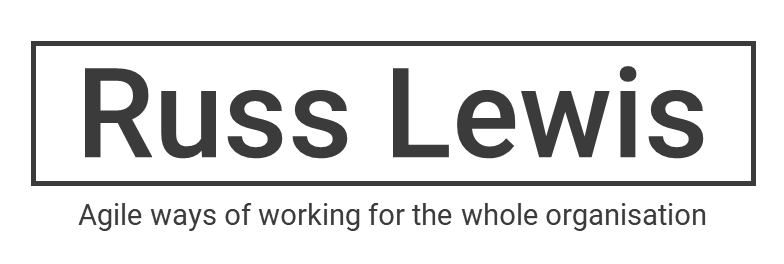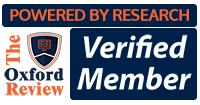The HOW of Transformation recorded at the Global Digital Transformation Summit in Berlin 2023
Summary
Managers who manage tensions enjoy greater performance, especially in complex and dynamic environments.
In this 36-minute talk:
I tell the story of Transport for London's transformation from a one-sided fares Operator to an integrated Developer-Operator.
And show how technologists using DevOps achieve up to 5600X performance – developing new features and operating BAU - as one team with two goals.
Therefore, combining the opposing forces of new product development and BAU with managers resolves the problems caused by divisions of labour, silos, and hierarchy.
- I reveal the six core tensions found in every organisation
- And explain why Illusion-Reality is the best focus for managers who want to create the conditions for high performance.
Remarkably good quality, given that it was recorded on my phone, which was propped up against a water bottle!
My preparation for delivering the HOW of transformation talk
I'm an improviser, so I rely on the words that come to me live, on stage. But I do a lot of preparation and 'dry run' practice. In this case, I wrote a script and a set of prompts. I used neither, which shows that it's the act of preparing that's more important than the output.
Prompts version
1 Title
20 years of practice - almost 10 of research
2 New possibilities – Old certainties
James March “Exploring new possibilities or exploiting old certainties”
eg Designing a vehicle and manufacturing vehicles
Exploration focus on time - production focus on costs
How’s that been working out in the digital age?
- cyber security attack on the British Library
- Silicon Valley Startup bank collapse with $150bn of uninsured deposits
- Last year, BA’s baggage handling system at Heathrow airport failed
- 2019, 2017, 2009, and 2008
I’m going to reveal HOW managers, at every level, can lead transformation
3 Organisational ambidexterity
Ambidextrous performance through Dual Structures
By 2000 innovation happening faster than firms could absorb
- middle managers fired - weren’t seen as productive
- firms held to account for social irresponsibility
- workplace was becoming increasingly complex
Certain managers achieved contextual ambidexterity
Toyota model change from 2-3 months (Ford-Chrysler) to 5 days
4 Ambidextrous transformation
Boris announced one card by 2010
- TfL operated just 270 underground stations
- Expansion included 613 underground and mainline railway stations
- run by 12 different Train Operating Companies
- plus a few hundred buses, a dozen trams, 3 river boats, 1 cable car
- and more than 8 million routes through that network
Spent 9 months with Swedish genius in the fares and ticketing office itself
- amongst the people who operated the existing system
Told us about parents who tapped-in three times to get kids in
- what happened during Notting Hill carnival when gates were opened
That system went live on January 2nd of 2010
- TfL gained confidence
World’s first contactless fares system live on buses in 2012, full network 2014
- calculating and charging fares for 2.5m journeys a day
TfL transformed into developer-operator licensing IP and systems globally
5 DevOps
Separate Development and Operations teams creates ‘them and us’ cultures
DevOps teams - ambidextrous goals: building features and running services
- one manager to shape context
- performance uplift staggering
6 Why this matters now
Reveals tensions are the key to transformation
Resource-based strategy good for slow markets: managers predict-plan-control
Emergent strategy in dynamic, digital markets: managers create conditions
- Both/And approach shift from 90/10 to 70/30 or 50/50 in tech
Manage tensions instead of ignoring them and managing resources
- amplify, so they can be recognised and resolved
7 Six Core tensions
Analysed dozens of tensions into 6 categories
- Top three: Lean and Agile - well known theory and practice
- Illusion – Reality is where experimentation generates new knowledge
- A/B tests to get empirical data and overcome biases and mindsets
- [If time] Taiichi Ohno transforming Japanese managers and their egos
Performance of human systems displays routine variation – which we ignore
- same with earth’s resources - don’t know how much we can safely take
I describe how managers shape the organisation according to their beliefs in my little book - An Operating Model for business agility
8 Paradoxical tensions
Find useful tensions by looking for paradoxical opposites – yin/yang
- night and day, heat and cool, female and male
Each strong but needs the other to thrive - whole greater than its parts
- true of person, team, company
Sometimes one part acts up and overplays its strengths
- system as a whole fails and has to be re-balanced
- realising we have over-exploited the planet
- and need to redress social injustices
9 Virtuous cycle
Managing tensions delivers what organisations want from transformation
- and creates a virtuous cycle
Becoming efficient in both change and operation activities makes it easier to deal with change when it occurs
- we get better at recognising the sources of tension
- at understanding how tensions lead to change
- and how facilitating healthy conflict allows better decisions to emerge
10 Key takeaways for managers
Managing tensions - transformational opportunity for managers, at all levels
3 things:
1 Shape context for success
- establish what’s most important right now
- check people understand
- ask what they need to do their job
2 Try to replace either/or decisionswith both/and outcomes- balancing multiple outcomes is a skill we all have
- no reason to prevent people from doing so at work
3 Make small changes, regularly
- Adaptability is learned through practice
11 Lastly
A thought that makes me optimistic - pause
Hope this has opened new opportunities and ideas for you
- I’d love to know what stood out for you
Recommendations for readers
- Email for research papers
Working title of next book is Manage Tensions Not People – end of next year My little yellow book in the middle sets the tensions into the operating model
Script (extracts)
2 New possibilities – Old certainties
Behavioural scientist James G March described “Exploring new possibilities or exploiting old certainties” as the fundamental tension in every business
eg Designing a vehicle and manufacturing vehicles
- have different goals and involve different ways of working
- in exploration the focus is time – how long it will take to get the product to market
- Agile controls work well here
- short bursts of work followed by inspection and course correction
- Once in production, focus moves to controlling costs
- because every dollar saved is an extra dollar of profit
- Lean practices, detailed plans and plenty of checks help increase efficiency
- and maintain quality
Managing different ways of working is usually achieved by functional hierarchy
- especially in large organisation
- Production gets one set of managers, budgets, and targets
- whilst R&D has its own
Hands up if you recognise this pattern
- if your firm separates Product Development from Operations
- right – Division of Labour is the 18th century design
- that gave us most of the big industries we know and love today
- Haha!
How’s that been working out in the digital age?
- This month there was a cyber security attack on the British Library – citizen’s details leaked
- Earlier in the year, Silicon Valley Startup bank collapsed with $150bn of uninsured customer deposits
- Last year, BA’s baggage handling system at Heathrow airport failed
- just as it had in 2019, 2017, 2009, and 2008, when terminal 5 first opened
No wonder transformation’s a necessity for so many organisations
The good news is that I’m going to reveal HOW managers, at every level, can lead that transformation
3 Organisational ambidexterity
I’m not making this up – it is a well-researched phenomenon called Organisational Ambidexterity
Academics reasoned firms achieved ambidextrous performance through Dual Structures
- keeping Innovation activities as far away from Production as possible
I remember working in skunkworks teams
- tiny teams that “got things done”
- we succeeded because we were, as Clayton Christensen wrote (in 1997)
- “independent from the normal resource allocation process”
By 2000 innovation was already happening faster than firms could keep up with
- there wasn’t time, or budget for learning the tools and techniques they needed
- I taught programming to people expected to be effective after a 5-day course
- Change was happening faster than traditional structures could absorb
- middle managers were being fired because they weren’t seen as productive
- firms were being held to account for social irresponsibility
- and the workplace was becoming increasingly complex
[click]
Researchers noticed certain managers were able to achieve ambidextrous performance
- by shaping the context of work for their teams or departments
- they were efficient in both developmental and operational goals
This is called contextual ambidexterity
My favourite study took place in the Toyota factory in California, USA
- manufacturers were already efficient in producing cars
- but model changeovers took 2 to 3 months
- Toyota’s managers collaborated, trained, and experimented with workers
- until they brought changeover times down to five days
- They had become efficient in both routine and non-routine tasks
- and gained a big competitive advantage over Ford and Chrysler
4 Ambidextrous transformation
This example bring us up to date with TfL’s Ambidextrous Transformation
- although I have to read some of the figures!
When Boris Johnson was the Mayor of London, he announced that
- By 2010, passengers would be able to pay for all London travel using just one card,
- At the time, TfL operated just 270 underground stations
- Boris’s expansion included 613 underground and mainline railway stations
- run by 12 different Train Operating Companies
- plus a few hundred buses, a dozen trams, 3 river boats, 1 cable car
- and more than 8 million routes through that network
But none of TfL’s development partners were prepared to take on the project
- CUBIC, the company who built all their systems, said it was impossible
- Since outsourcing wasn’t an option, and with nothing to lose, TfL decided to have a go at developing the system themselves
- which is why I was brought in – as the expert in enterprise software development
- For 9 months I worked with a Swedish genius by the name of Peter Svensson
- in the fares and ticketing office itself
- amongst the people who operated the existing system
They told us how they worked
- about parents who tapped-in three times
- to get themselves and then their kids through the barriers
- and that people weren’t able to tap when they opened the gates for Notting Hill Carnival
- we captured the knowledge they had been accumulating for years
- without thinking about its value or significance
Not only did that system go live on January 2nd of 2010, but it gave TfL the confidence to go on to build the world’s first contactless fares system.
- We went live with contactless on buses in time for the London Olympics in 2012
- and live across the whole network in 2014
[click]
In just a few years, TfL transformed from being an operator only,
- into a developer-operator that licensed its Intellectual Property and systems to cities around the world
- these recent figures show the system is calculating and charging fares
- for more than 2.5m journeys every day
11 Lastly
I’ll leave you with a thought that make me optimistic - pause
[click]
I hope this presentation has opened some new opportunities and ideas for you
So do get in touch – I’d love to know what stood out for you
- I’m still interviewing managers about tensions
- and I help managers transform their organisations
[click]
If you’re a reader, I have some recommendations
- Email me if you want the references for the research papers I’ve used
The working title of my next book is Manage Tensions Not People – end of next year - the yellow book in the middle sets the tensions into the operating model - also written for managers







